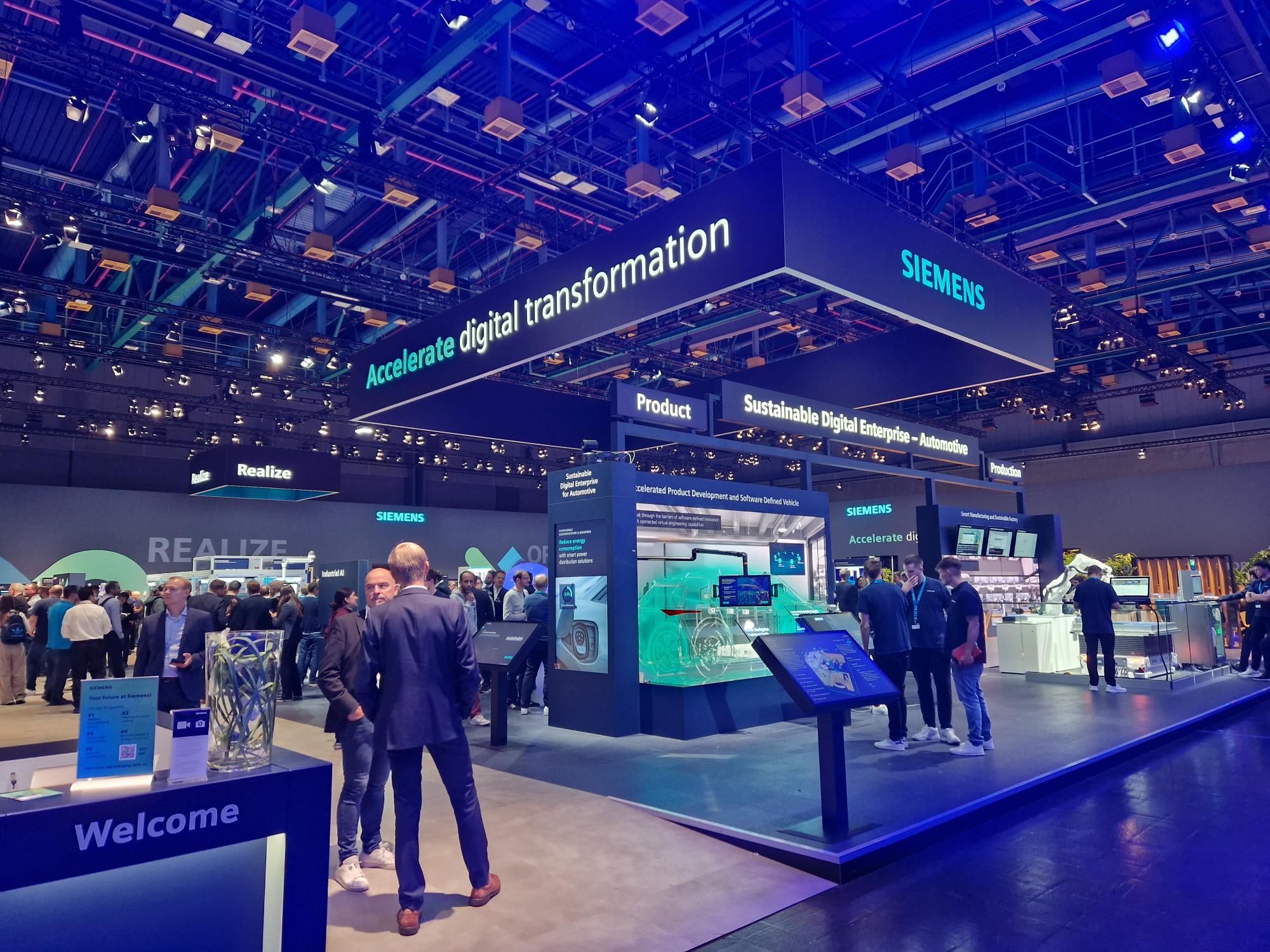Insights from SPS 2024: consolidation, regulations, and cybersecurity, rather than GenAI, are the dominant topics in industrial automation today
The 2024 SPS fair in Nuremberg was an excellent opportunity to discuss the trend topics in the industrial automation world with many industry experts.

Here are the key insights from our meetings:
Market consolidation everywhere: The fair mirrors the current market consolidation. While the number of visitors remained flat compared to 2023 (around 50k), the number of exhibitors shrunk by 10% (from 1,229 to 1,114). It was evident that even a big vendor like Siemens had significantly reduced its booth size this year. Two management buy-outs were also visible at the fair. German Edge Cloud (GEC) was not present after the split from Friedhelm Loh Group in the past few weeks, and Cumulocity was a newcomer at the event after the management buy-out from Software AG took place in September 2024.
Moreover, AWS was the last cloud hyperscaler to leave the SPS fair, following Microsoft, who had stopped participating in 2023. This clearly shows that the big IT players did not succeed in entering the industrial market by themselves on a broader basis. It also reflects the fact that these vendors have shifted their current focus towards building the cloud infrastructures for the upcoming AI gold rush. Nevertheless, we are pretty sure that they will return to SPS together with their partner ecosystems as soon as they are ready to offer the next generation of industrial AI solutions.
Compliance with upcoming EU regulations: The industry has to adapt to several upcoming EU regulations in the coming years. While NIS-2 (Network and Information Security Directive 2) focuses on cybersecurity at an organizational level in critical sectors (energy, mobility, banking, health, and digital infrastructures), the Cyber Resilience Act (CRA) and the new European Machinery Regulation address the cybersecurity needs of devices and machines that are connected to the IoT and use software. Most relevant in this context is the fact that vendors have to enable security mechanisms across the entire product life cycle, including continuous software updates.
On top of this, the EU will introduce a Digital Product Passport (DPP) in the coming years, which is basically a file that provides detailed information about a product (user manuals, materials, recycling). Many presentations at the SPS addressed these topics. Even the German Federal Office for Information Security (Bundesamt für Sicherheit in der Informationstechnik, BSI) was present with its own booth to answer questions. To deal with all these regulations, machine builders need effective digital tools to manage software updates across their installed base and automated tools to update product information in the DPP.
Cybersecurity needs are pushing IT tools and concepts into the OT world: In the past, agility and efficiency improvements have been the main reasons for machine builders to use industrial edge management platforms for software updates at the machine edge. Leading vendors include Siemens, Phoenix Contact, and Bosch Rexroth.
The upcoming cybersecurity regulations mentioned above illustrate the strategic relevance of scalable edge management capabilities for machine builders to ensure cybersecurity over the lifetime of their products in the field. Unsurprisingly, multiple vendors, like Schneider Electric, introduced their edge management solutions at the SPS fair this year.
We talked to vendors like Red Hat and Kontron, who support customers in complying with upcoming regulations through dedicated solutions and services around Linux-based operating systems for industrial purposes. Red Hat announced a developer preview of the Red Hat Device Edge for Industrial Controls, which is tailored to running mission-critical workloads on a highly reliable platform with deterministic performance.
Kontron supports customers in security-critical industries like utilities with KontronOS and managed services to ensure the cybersecurity of their embedded devices in field operations. The CRA is also driving the evolution towards virtual industrial control systems. CODESYS presented a prototype of its virtual safety PLC at last year’s SPS and confirmed at this year’s show that the certification process should be finalized by the end of the year.
Siemens and Phoenix Contact are also making progress in obtaining safety certification for their vPLCs; they expect to complete this procedure by late 2024 or early 2025. It is obvious that IT is increasingly shaping the OT world. Cybersecurity and compliance are the current drivers of this trend, with software-defined automation and IT/OT integration being strongly hyped terms that represent this evolution.
Industrial GenAI is still in the early stages: Regarding GenAI, three interesting aspects emerged in our discussions. First, although GenAI-based assistants that write code for industrial automation engineering purposes have been a topic at other trade shows in 2023/24, we understood that industrial vendors are still struggling to clearly define the concrete business value (RoI) and reconcile it with the associated costs of GenAI capabilities.
This is why these copilots are still at the POC stage, and vendors are still working on suitable business models to monetize them. Second, we found Siemens’ demonstration of AI agents very interesting. Siemens showed how a GenAI-based agent breaks down larger tasks into subtasks and orchestrates other agents to complete multi-step administrative tasks like creating new engineering projects in the Siemens TIA portal with minimal effort for users. Third, in PAC’s view, the relevance of breaking up data silos across IT, OT, and engineering data to prepare for the upcoming age of AI was totally underrepresented as a topic at the show.